a.e. IDEAS Music
The music found here was created to be used with our scarf kits. We are excited to explore how Bear Paw Creek’s other music movement products can be used with this music as well: stretchy band, streamers, scarves, bean bags, and balloon balls. IDEAS Music was created especially for kids, as a tool for developing knowledge and skills in many disciplines.
Composed by Linda Worsley, each of the ear-catching pieces captures the child’s attention while you choose the focus of the lesson. Using different styles and instrument combinations,
Linda has created contrasting moods and possibilities for exploration. Each piece is a sort but complete whole, childlike without being childish or trite.
Children deserve the best quality sounds, so they become discriminating listeners. Recording was done in the same studios used by famous bands and demanding performers, and mixed using the newest digital technology. Synthesized and acoustic sounds are blended to create warm, rich, real music. IDEAS created these pieces to honor children’s right to quality and developmentally appropriate learning tools. When you use quality materials, you will find yourself engaged right along with the kids. Enjoy them together!
2023 Update – As we are selling out of the physical cd copies, all orders will include access to ALL aeIDEAS music as a digital download.
Music Colors – Digital Download
The Many Colored Days music tracks accompany the Dr. Seuss board Book and colored scarf kit. It is for both classroom and individual use and the music is perfect for use by itself for exploration of movement, mood and creativity.
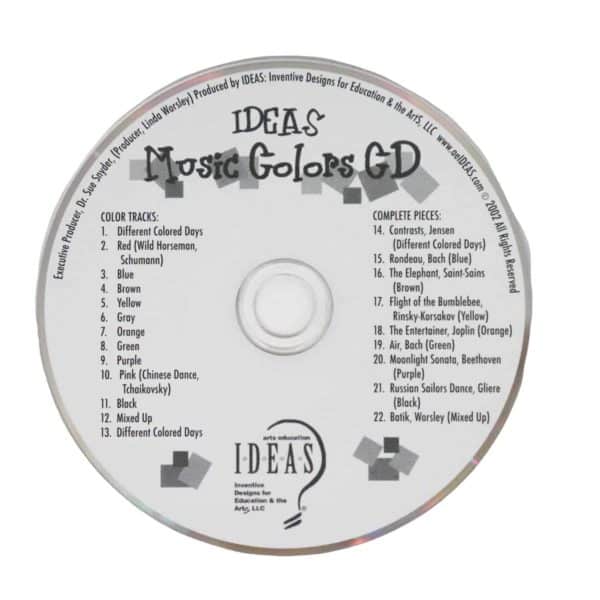
The 22 tracks include short excerpts to go along with each page, and then the complete musical selections for extended listening. This magical musical set is ready for action play and learning for the family or classroom.
Track List
Excerpts to go with Book Reading:
- Different Colored Days
- Red (Wild Horseman, Schumann)
- Blue
- Brown
- Yellow
- Gray
- Orange
- Green
- Purple
- Pink (Chinese Dance, Tchaikovsky)
- Black
- Mixed Up
- Different Colored Days
Complete Selections:
- Contrasts, Jensen (Different Colored Days)
- Rondeau, Bach (Blue)
- The Elephant, Saint-Saëns (Brown)
- Flight of the Bumblebee, Rimsky-Korsakov (Yellow)
- The Entertainer, Joplin (Orange)
- Air, Bach (Green)
- Moonlight Sonata, Beethoven (Purple)
- Russian Sailors’ Dance, Gliére (Black)
- Batik, Worsley (Mixed Up)
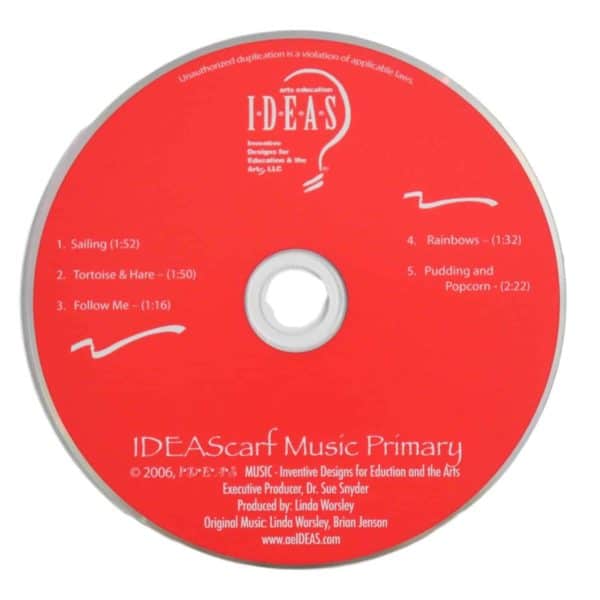
Primary
Meet the Music
- Sailing
Sailing provides a chance for individuals to try out different ways to move. Props might
include scarves, streamers, or other objects which flow to show a phrase. Musical features
are clear flowing phrases, and a rhythm that keeps things moving. The form is introduction,
A, A’, B, interlude, A, coda. Listen for the keyboard and soprano saxophone during the
melody. At first, just turn at the beginning of each phrase. Then begin to add locomotor
movement changing direction on every new phrase. On another listening, move to the
longer, steady tones of the bass. - Tortoise and Hare
Remember that story about the Tortoise and Hare? Listen to ehar how this version of the
story works out! Music al features are slow/fast contrast, low and high pitch, and a haunting
melody. Building on the clear, consistent phrases of Sailing, this piece tries to fool you by
playing with phrase length. Listen for the clarinet and guitar during the slow sections, flute
and mandolin during the fast sections. Dramatize the story with one person, a pair, or twogroups. Scarves can be costumes or props. Check for listening by having children draw a
tortoise on one side of a paper plate, the hare on the other side, then hold up the
appropriate picture as they listen, turning the plate when they hear a different character
appear. Students could draw a map of this story, then follow it as they listen to the music. - Follow Me
An echo is an exact imitation of sound, and children learn by imitation. Listen for the oboe
solos, then the exact echo by the keyboard, glockenspiel, and mandolin. The for is rondo:
introduction, A, B, A, C, A; with B and C half the length of A. Watch a leader, then imitate
the movements as a visual echo, to build a larger repertoire of movements. In a group,
form a circle and let each person have a turn leading one pattern. Take time to discuss
those patterns that were particularly interesting or fun and combine these patterns into a
movement piece. Now have the students decide what sounds they can create to go with
this new piece and compose their own music. - Rainbows
A mirror image occurs when two people move the same way at exactly the same time. The
long, flowing phrases of Rainbows, supported by string and harp-like accompaniment
rainbows, will give shape to your movement. Face a partner and one lead as the other
follows, just like a mirror image. Who is leading? You can specify who will lead and when to
change leadership, or you might explore the mirror by putting hands on the surface and
having no leader. Be sure to encourage mirroring other body parts than just hands and
arms. Listen for clarinet, flute and glockenspiel; and ABABA form. - Pudding and Popcorn
The title describes the contrast between slow, flowing phrases and short, separated sounds.
Listen and move as the oboe, flute and guitar play with one another. Choose pudding or
popcorn, and don’t’ let the instruments fool you! By now, you have a large repertoire of
movement, and are used to moving along with others. On the first listening, face a partner
and do a hand dance, using just hands and arms to show the pudding and popcorn textures.
Then, just as the instruments play together, let your movement be part of a larger dance
with others. Watch for movements you like, and join in. It may take several listenings to
develop a dance that feels cohesive, but that’s the point. The more times we listen, the
more we understand.
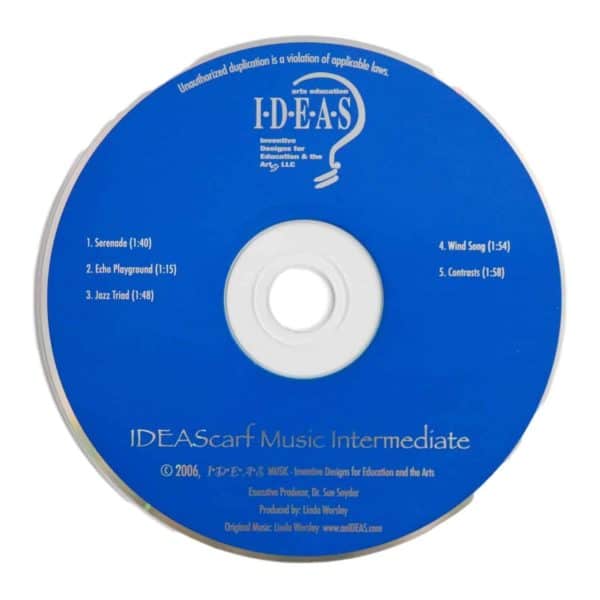
Intermediate
Meet the Music
- Serenade
Serenade provides a chance to try out different ways to move. Musical features are flowing phrases in a through-composed melody, with an exotic feeling. Listen for the sounds of oboe and clarinet. After experimenting individually and watching each other to build a repertoire of possible movements, have children mirror one another in pairs. Mirroring is done by one partner moving slowly to the music, and the other partner matching the movements exactly, as in a mirror. This activity requires intense concentration and builds interpersonal understanding at the same time. - Echo Playground
This joyful echo piece is inspired by the actions and sounds of the playground. Use the first listening to identify the sounds that remind the listener of a playground. It would be fun to echo-mime playground actions before listening, to build a repertoire of movements. On the first listening, just identify the sounds of the playground. The clarinet, flute and guitar play together, always playing a pattern then its echo. First it is follow-the-leader (clarinet), then the leader follows. Try moving in three groups, or groups of three, with one group or individual assigned to move for each instrument. Move to the ends of sections together. - Jazz Triad
Building on the three groups in Echo Playground, Jazz Triad is a playful interplay of keyboard, soprano sax and guitar. In three groups, or groups of three, have students choreograph a dance, with each group or individual moving to one of the instruments. Add scarves as part of the movement, or as costumes. - Wind Song
The introvert feeling of 3/ 4 meter, coupled with long phrases and the sound of clarinets and flutes give the flowing, lilting feeling of wind on a hill. Explore the upward and downward flow of the melody, as it unwinds on the musical landscape. As you move, notice the movements of others around you, and react to them. - Contrasts
This piece is a classic theme and variations. Variation 1 is slower, 2 gets faster, 3 is windy and twirly, 4 combines stoic pipe organ and rock guitar, the final culmination combines aspects of all previous variations. Create a movement to the theme then have individuals or groups create movement variations that keep the basic movement idea, but also reflect the musical characteristics of their particular variation.
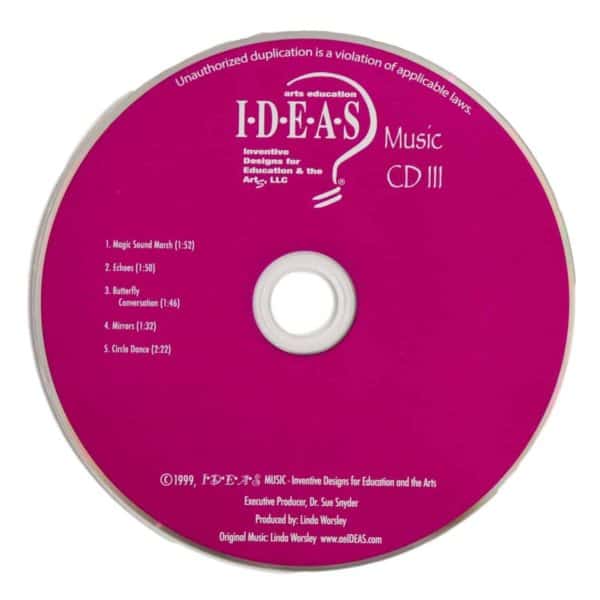
Description
Advanced CD III – $10 (Digital Download Included)
Meet the Music
1. Magic Sound March
Magic Sound March is through-composed, with lively march tunes spinning over time. This piece is designed to build attentive listening by introducing a magic sound, played by a horn, heard first in isolation, then at predictable points, and finally at less predictable time. This provides a chance for students to practice marching, while using their scarves or a movement to flick, dab, point or toss with the steady beat. At first, just march with scarves and freeze every time the magic sound is heard. On another listening, march, then turn a new direction on each magic sound, then make a new pathway through shared space, using scarves, flags, paper – use your imagination with props.
2. Echoes
An echo is an exact imitation of sound, movement, or image. Children learn by imitation. Echoes is in ABABA form. The A section contains beautiful, flowing echoes, while the B section has no echoes. Listen to the music first, and have students raise a hand when they hear the echo. Then, as a group, have students echo you as you move your scarf during the A sections and then create/improvise movements for the B sections. Now, have pairs of students decide who will be leader and echo, then move to Echoes with scarves, with all students improvising during the B sections. On another listening, change roles for leader and echo.
3. Butterfly Conversation
Did you ever wonder what it might sound like if butterflies “talked” to one another? Their conversation might include questions and answers, each butterfly taking turns speaking and listening. Butterfly Conversation is a musical version of that scene. The piece is in AABAABAcoda form, with fluttering butterfly introduction and interludes. Listen for a four-measure question, followed by a four-measure answer. In the B section they are two measures each. First have students watch y9uo move to create the question and they move the answer. Discuss how their movement answers should contain part of your movement question. On another listening, have pairs create a scarf conversation, then switch roles. Conversations may also be performed with butterfly puppets attached to hands, kites, or ribbons. Experiment!
4. Mirrors
A mirror image occurs when two people move the same way at exactly the same time. Mirrors is a jazzy piece with phrases that move in opposition. Every phrase, including the four-bar introduction, interlude, coda, and every two-bar phrase within the piece is a mirror, both rhythmically and melodically. In pairs, one leads as another creates an opposite motion, first at the same time, then delayed two bars. Movements should reflect the mood of the piece. This activity requires intense concentration and builds interpersonal understanding. Have successful pairs share their work.
5. Circle Dance
Circle Dance has a Celtic feeling, just begging for movement. Its form is cumulative, with the A section being a common repeated theme, and subsequent sections presented alone, then one added to previous ones: A B A C[CB] A D [DC][DCB] A E [ED][EDC][EDCB] A. Explore movements for the A section, then create a whole group circle dance for A. Break into smaller circles, each interpreting Bk C, D or E. All move together on A, then each group move when their unique section is heard.
CD 1 is the primary and intermediate CD compilation and will be included with each order.
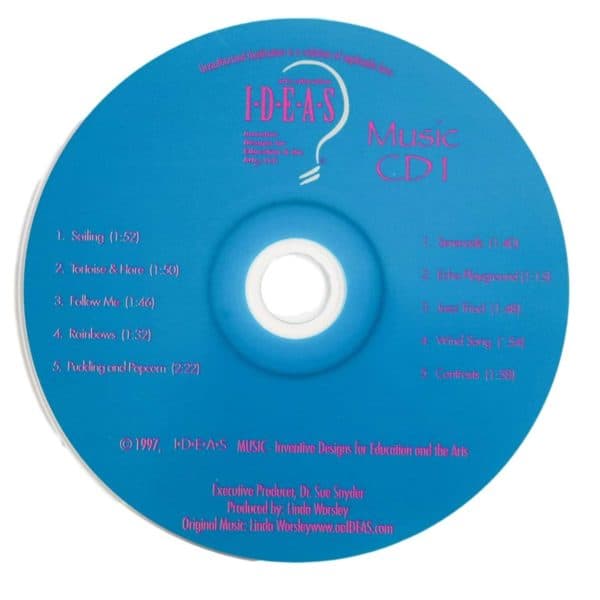
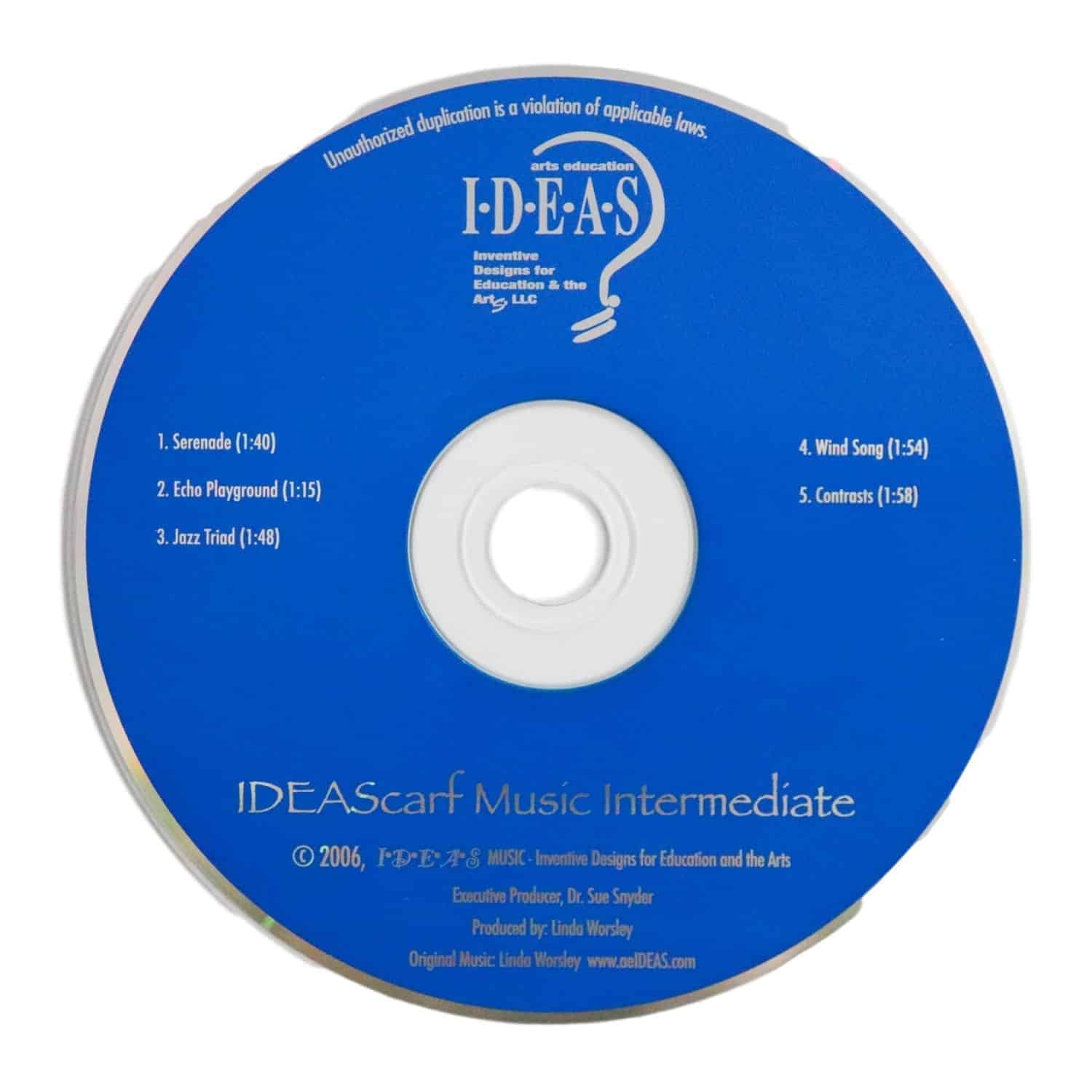

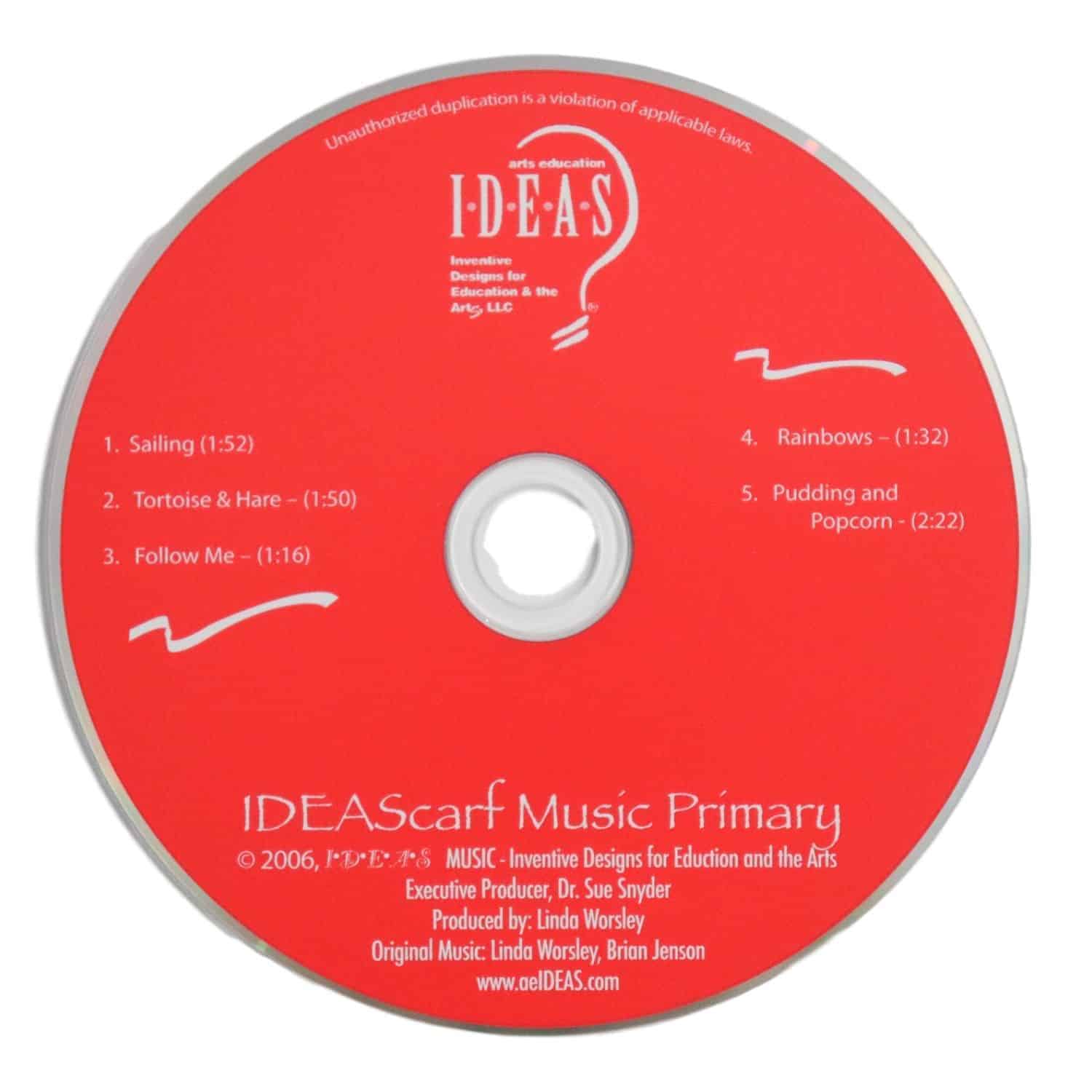
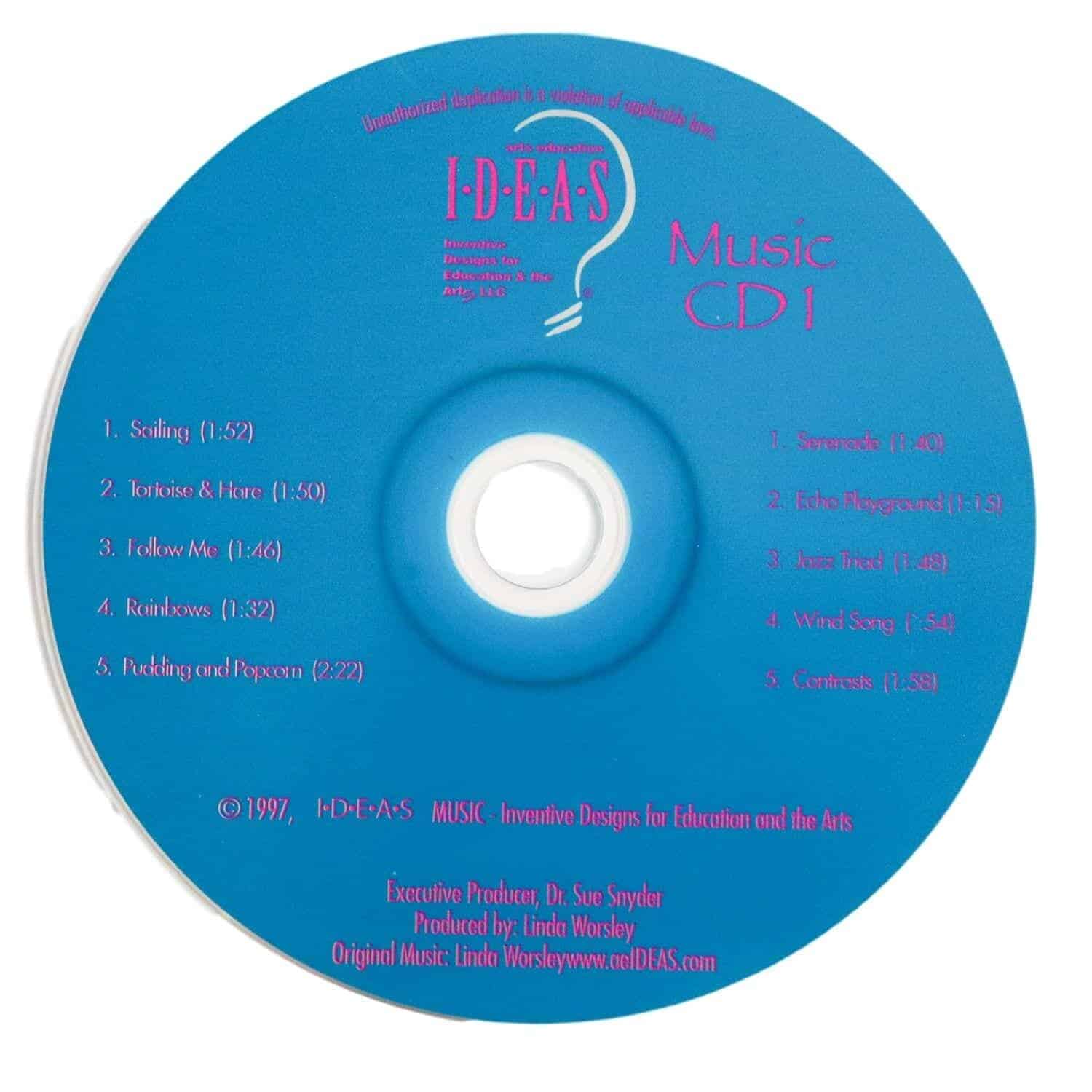
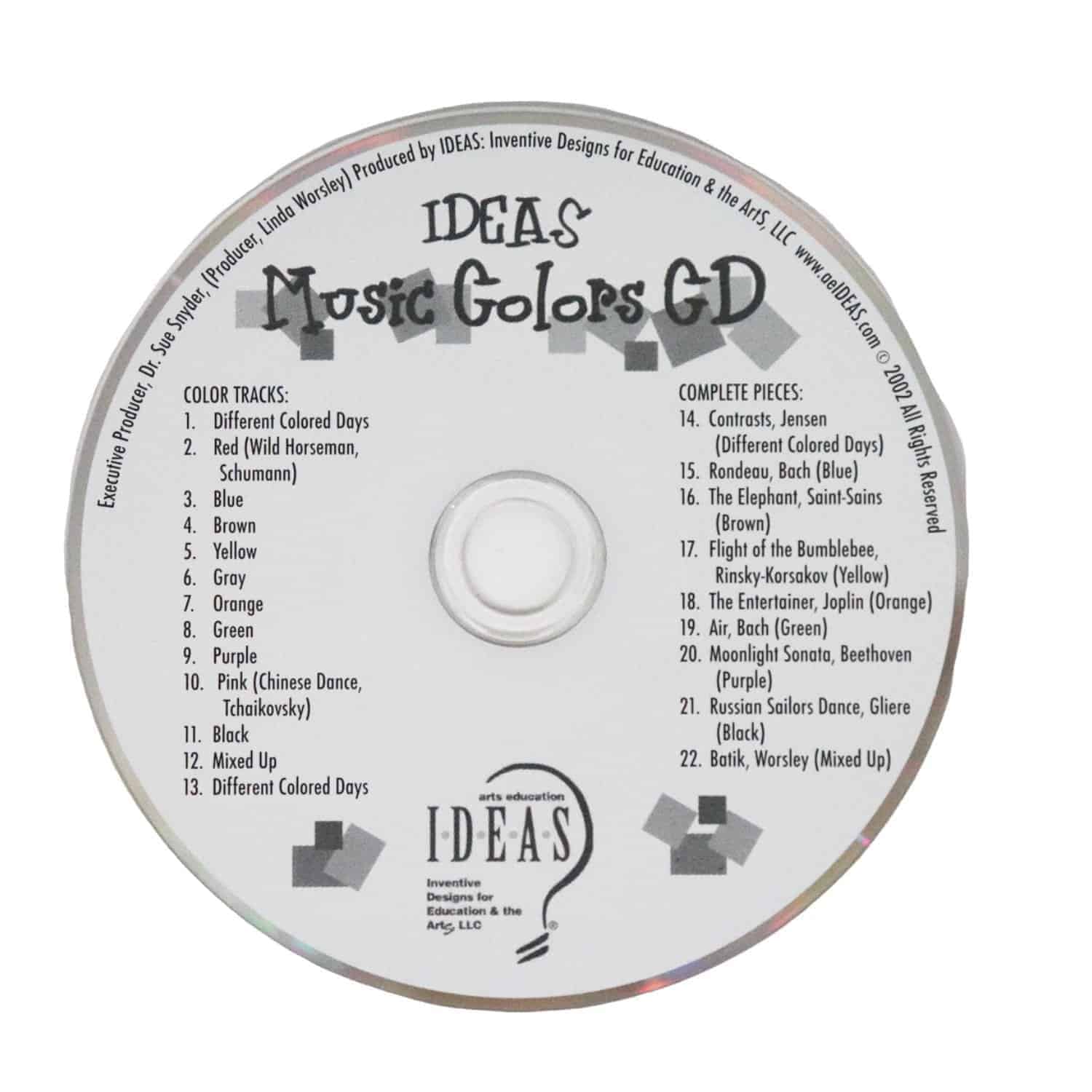
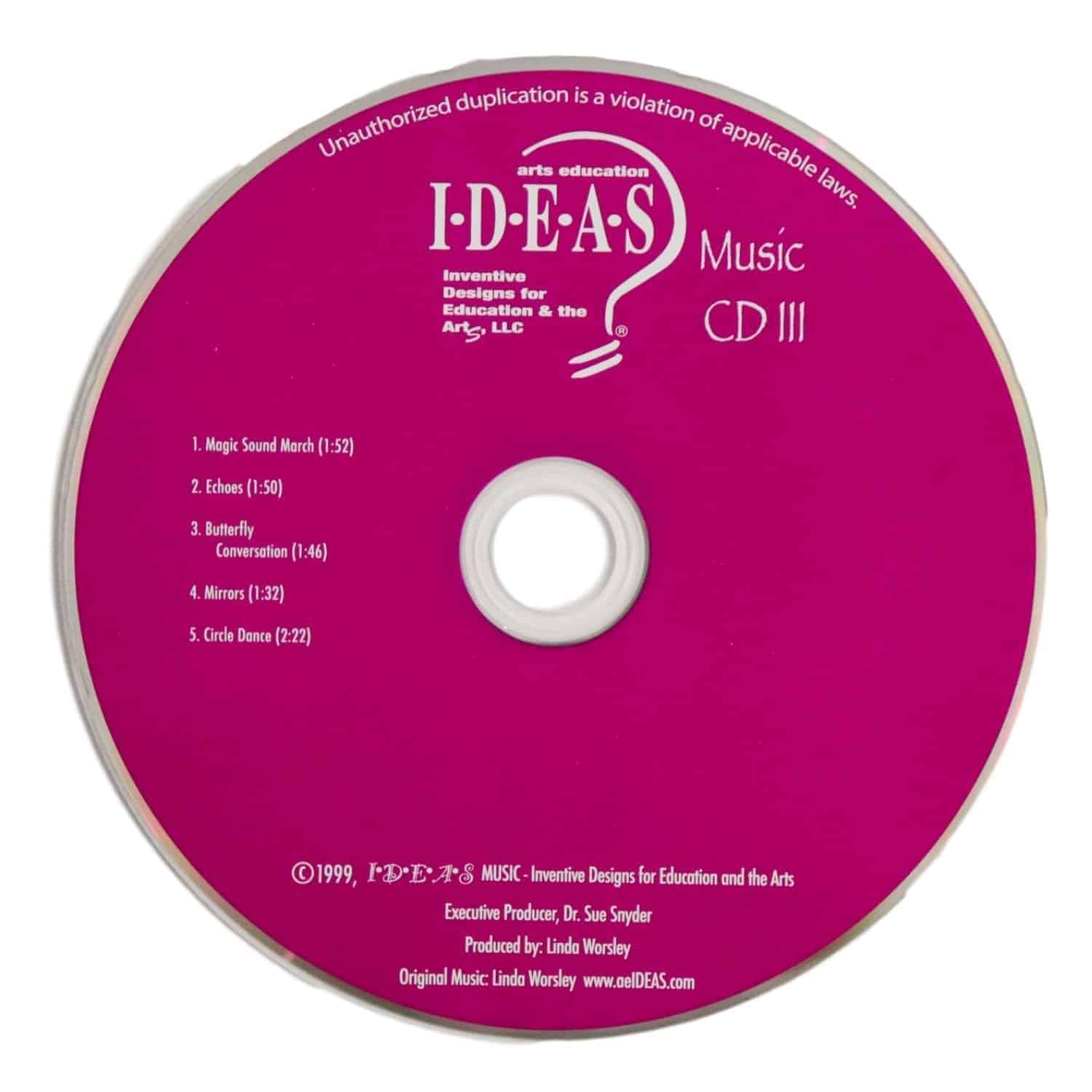
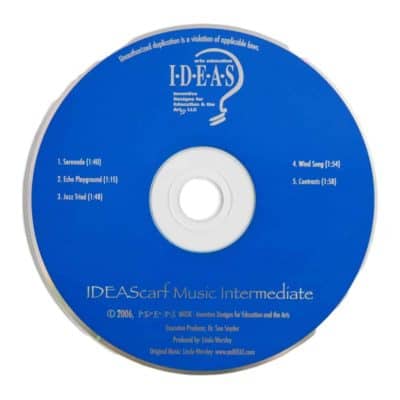
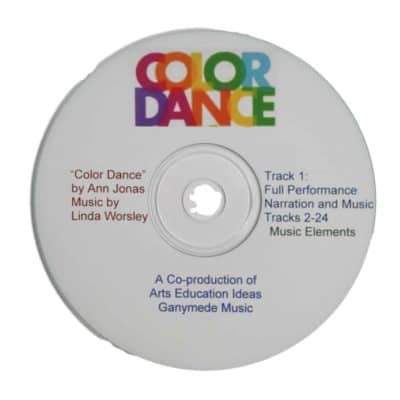
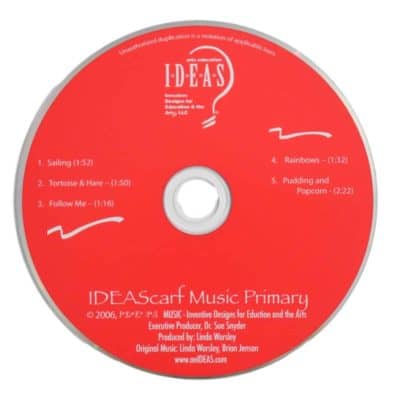
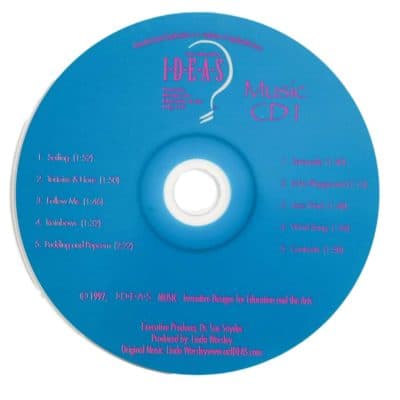
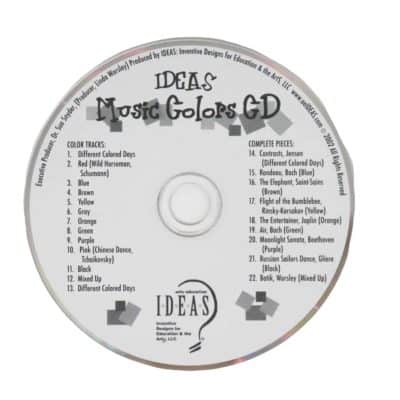
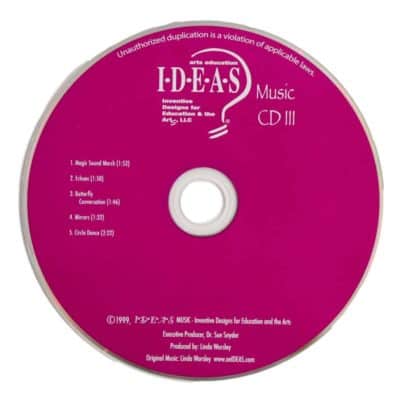
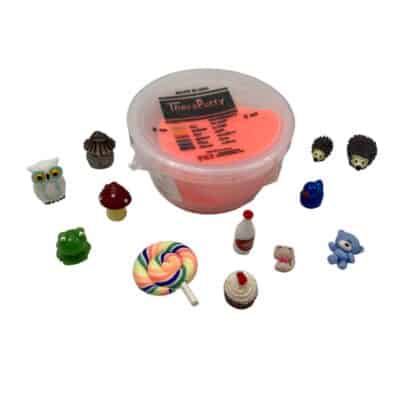
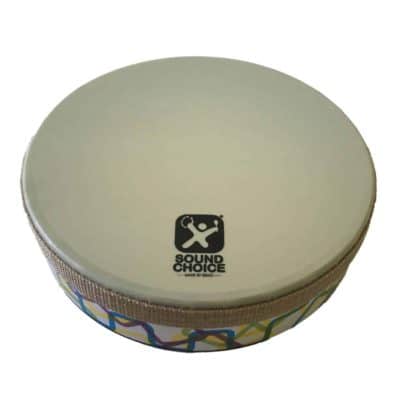
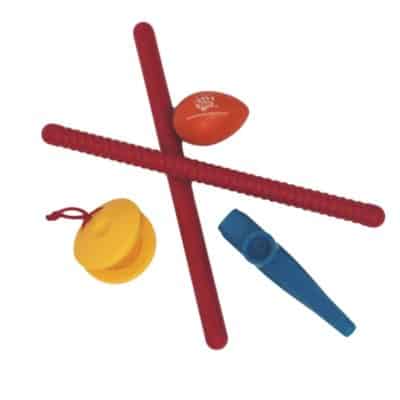
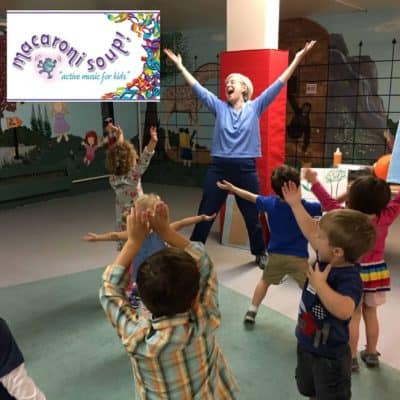
Reviews
There are no reviews yet.